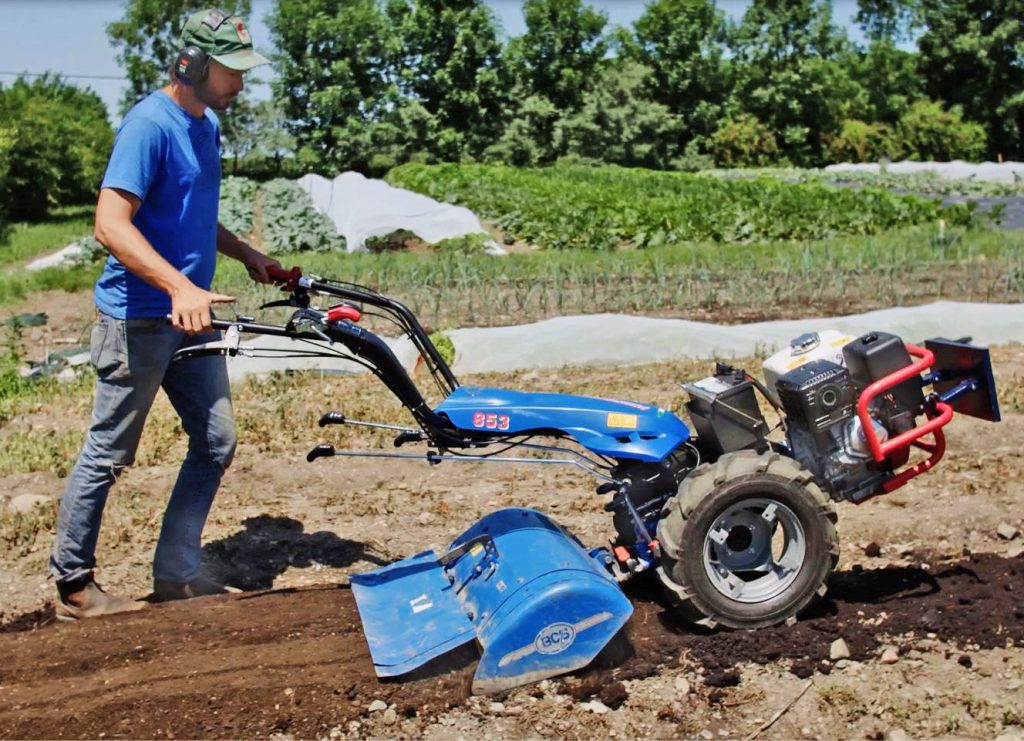
To have loose, fertile soil you must add fresh organic material like Mushroom Compost into your garden every season
Making Fluffy Dirt – Improving Your Garden Soil
My grandmother’s vegetable garden had the most wonderful rich, dark, crumbly soil I’ve ever seen. A powered tiller would have been a luxury in her world. Instead she set me to work “spading” it; painstakingly turning over every single shovelful, burying last years’ composted leaves and the first early weeds. She had the good fortune to live in southern New Jersey, where the soil is sandy and well-drained.
Most of us struggle with hard clay soil in summer and chewing gum clay in winter. “Topsoil” here in southern Ohio tends to be heavy clay, too dense for water or air to penetrate well and often lacking in nutrients. This heavy soil is the enemy for most plants, so dense and lacking in oxygen that only the toughest survivors can get anything from it. In August it can be as hard as brick.
Even top soils that are compost-rich tend to be waterlogged at planting time, costing gardeners precious days when timing is critical. How can you till and plant when your garden soil is saturated and soggy? Plants breathe through their roots, and “working wet soil” squeezes out the air plants need.
In order to have loose, fertile soil you must add fresh organic material into your garden every season. Peat moss loosens the soil but doesn’t feed it, so the next step is to add aged manure or compost. If you don’t have compost on hand, consider getting some Mushroom Compost. This wonderful dark, rich, moist mixture will fertilize your plants while breaking up clay soils. It is a quick, sure-fire way to boost the performance of almost everything you grow.
In early spring you need to dry things out. Spread a few bales of compressed Peat Moss and till them in. Peat Moss is bone dry and absorbs many times its weight in water, so tilling into wet soil dries things out immediately. We call it the “magic dust”. Suddenly your garden soil is crumbly and fluffy. During dry seasons, soil can become so hard you can’t get a shovel into it. Again, tilling in peat moss loosens compacted clay. Once you’ve tried Peat Moss you’ll never be without it.
Mushroom Compost is a one-step soil conditioner that has a magic effect on your landscape, lawn, or vegetable garden. Genuine mushroom compost is completely sterile, so unlike other compost it won’t add weed seeds to your garden. It is much too rich to plant into it directly, but mixed with other ingredients it is a magic booster for flowers, vegetables and even lawns. It is considered non-burning when you mix it with other soils, or top-dress existing plants that already have an established root system.
A by-product of mushroom farming, mushroom compost is an organic blend of wheat straw, peat moss, cottonseed meal, cottonseed hulls, corncobs, cocoa bean shells, gypsum, lime, chicken litter and/or horse stable bedding. These materials are thoroughly composted and sterilized, and then used to grow several mushroom crops before it is removed and replaced. Still rich in nutrients, the mixture is bagged or shipped by the semi-load as a soil enhancer.
The final step is to add organic plant foods like Plant Tone or Garden Tone by Espoma Organics. These are balanced meals containing lots of wholesome natural ingredients like gypsum, greensand and bone meal to help break up clay soil. They also contain Micorrhizae, soil micro-organisms that help your plants digest fertilizer and trace minerals.
Conventional fertilizers like 10-10-10 do nothing to build healthy garden soil long term; in fact they cause salt buildup. Instead, try feeding your plants with natural ingredients; trace minerals, beneficial microbes and other components blended into organic fertilizers that build and replenish tired soils.
Steve Boehme is a landscape designer/installer specializing in landscape “makeovers”. “Let’s Grow” is published weekly; column archives are on the “Garden Advice” page atwww.goodseedfarm.com. For more information is available at www.goodseedfarm.comor call GoodSeed Farm Landscapes at (937) 587-7021.

